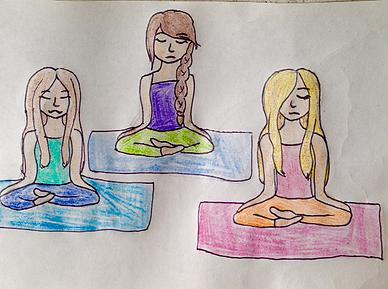|
I am qualified to give Mindfulness courses in Secondary Schools. The programme is called The .b.
.b Curriculum What is .b, pronounced [dot-be]?.b, pronounced [dot-be],stands for ‘Stop, Breathe and Be!’ This simple act of mindfulness provides the kernel of a ten lesson course for schools. .b is a 10-week course for young people aged 11-18, delivered in the classroom or in small groups within other youth-related settings. |
|
.b has primarily been designed for use in the classroom with what we would call ‘conscript’ audiences for 11-18 year olds, although it can also be used equally effectively in other settings.
At the most simple level .b is an awareness-raising exercise to give all students a taste of mindfulness so that they know about it and can return to it later in life if they choose to do so. However, for many pupils the course can lead to immediate and striking results: they feel happier, calmer and more fulfilled; they can concentrate better; they have a toolkit to deal with stress and anxiety. Objectives and outcomes are discussed in more detail below. |
The 10 lessonsThe .b curriculum is a set of ten lessons, each teaching a distinct mindfulness skill, and designed to do so in a way which engages young minds. The lessons typically include a brief presentation by the teacher with the help of lively, pupil-friendly visuals, film and sound images, and practical exercises and demonstrations to make the ideas vivid and relevant to their lives.
Putting mindfulness in a relevant context motivates pupils to become still and allows the teacher to lead them in some short practices – for example learning to sit still and watch the breath, be aware of different parts of the body, walk mindfully or become more aware of how the body feels under stress. It will typically end with an invitation to do some brief practices at home during the week. The whole course is supported by a student handbook. |
What are the benefits for the students?.b intends to help the young people who experience it to overcome difficulties, thrive and flourish – and the research that has taken place into its effectiveness suggests it does indeed have the potential to meet these more ambitious goals.
.b aims to help young people:
|
What .b is not
You may well meet with misconceptions about what .b is, or even have some yourself. Here is some clarity on what .b is not that can guide your responses.
You may well meet with misconceptions about what .b is, or even have some yourself. Here is some clarity on what .b is not that can guide your responses.
- Soft, fluffy, hippy dippy. There is a solid evidence base for teaching mindfulness which comes from careful evaluations of interventions, including some randomised control trials, and clear support from the evidence from brain imaging and the developing findings of neuroscience. It is summarised in the paper we have produced ‘Evidence for the Impact of Mindfulness on Children and Young People’.
- A disciplinary technique. Many people experience mindfulness as calming and over time many pupils do behave better, but that is not the main point, and if pursued for its own sake is likely to backfire with some resentful pupils. Mindfulness has to be for the learner themselves to help experience what is going on for them right now (including agitation, anger, the urge to fidget etc).
- Buddhism by the back door. Mindfulness has been developed from a Buddhist base but it is totally secular and can be engaged in by anyone of any faith, or none.
- Relaxation. A sense of calm and relaxation of tension in mind and body is another frequently experienced and welcome side effect of all various types of meditation, including mindfulness, but again this is not the prime goal of mindfulness, which is to be with whatever is happening, including if necessary tension and anxiety.
- Visualisation. Mindfulness is about getting in touch with what is actually happening in the mind and body, not taking yourself to another place or trying to create an alternative state of mind.
- Therapy. .b is education rather than therapy, and is not designed to address serious mental health problems, although it can certainly help with some difficult emotional states. It can however provide a universal entitlement for all that provides a useful backdrop and creates a climate and ethos that supports more targeted approaches for those with more severe problems.
- Adult mindfulness. The course is shorter, the messages punchier and more direct and the practices and discussions briefer. The goals are more modest, and include simply making all pupils aware of the existence of mindfulness in case they wish to explore it later.




